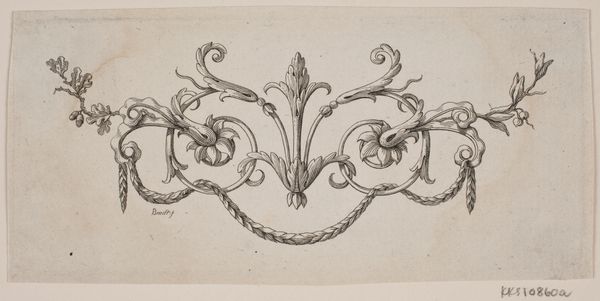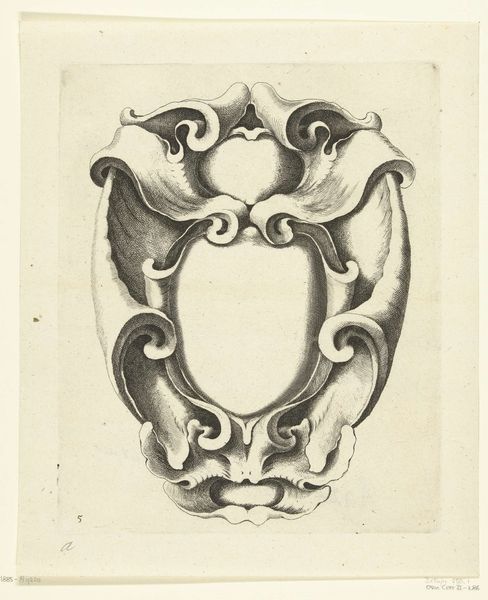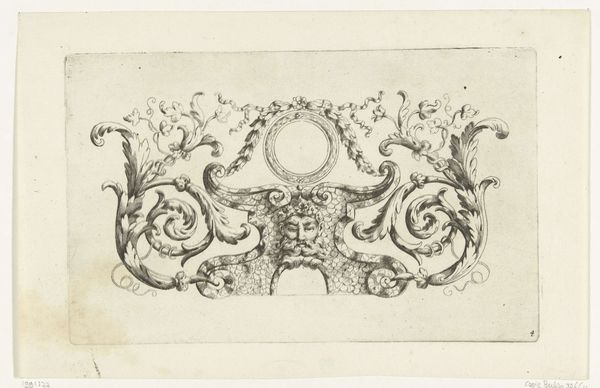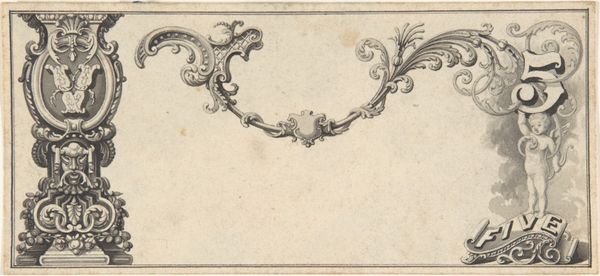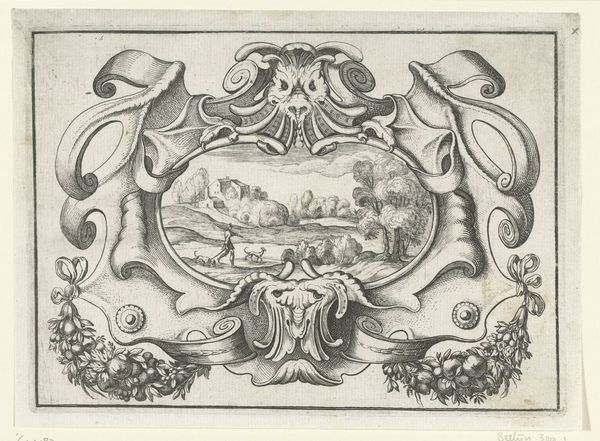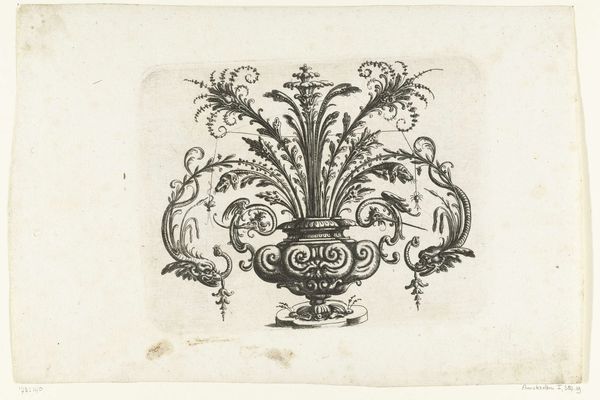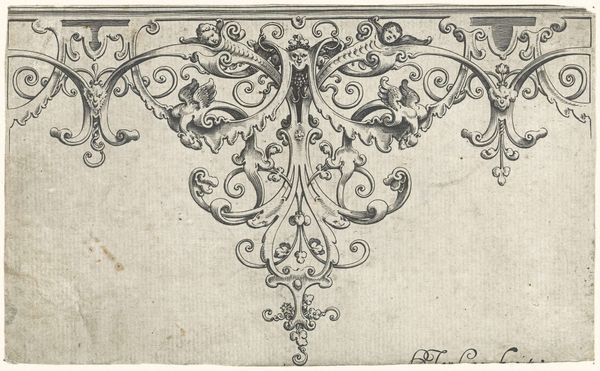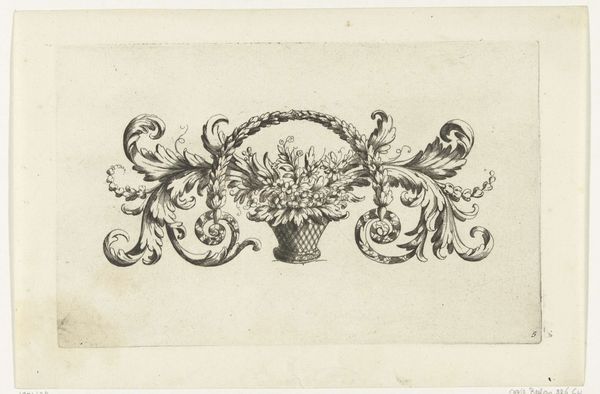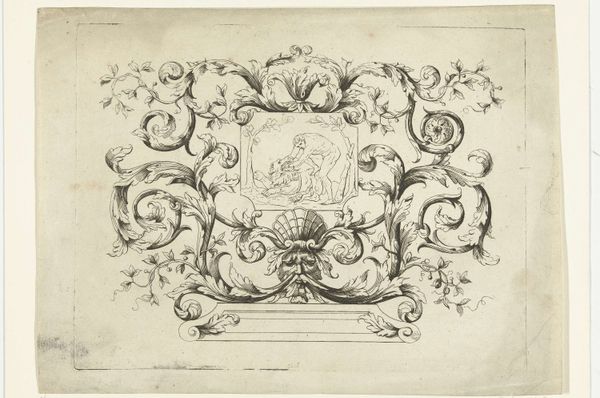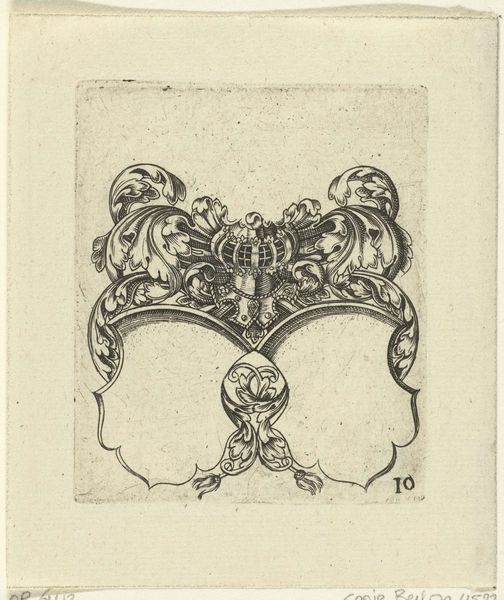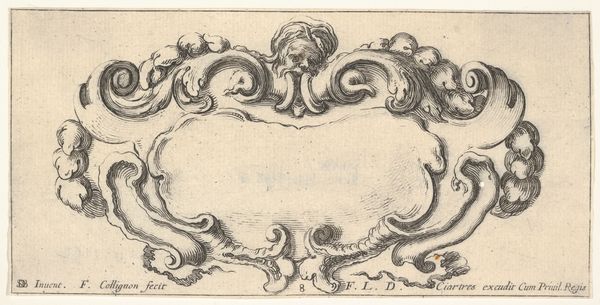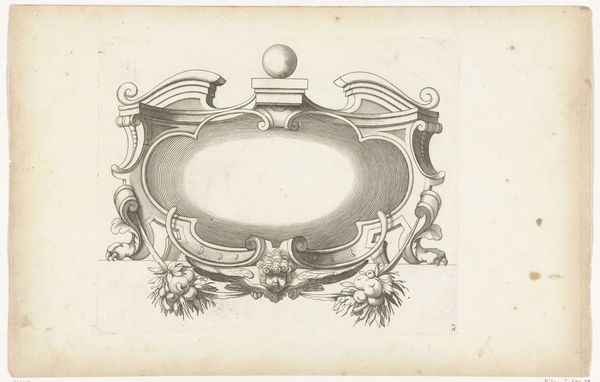
Cartouche met compartiment in de vorm van open monsterbek c. 1654 - 1678
0:00
0:00
jacoblutma
Rijksmuseum
drawing, graphic-art, print, ink, engraving
#
drawing
#
graphic-art
#
baroque
#
pen drawing
# print
#
ink
#
engraving
Dimensions: height 165 mm, width 225 mm
Copyright: Rijks Museum: Open Domain
Curator: This piece, created sometime between 1654 and 1678, is titled "Cartouche met compartiment in de vorm van open monsterbek," by Jacob Lutma. It's a detailed work combining drawing, graphic art, printmaking techniques using ink and engraving. Editor: The grotesque imagery is immediately striking, almost unsettling. There’s this tension between the decorative and the monstrous—a really intriguing duality. Curator: Absolutely. Let’s delve into that duality. Lutma’s focus on the monster's mouth as the central element invites an analysis of the labor involved. Such engravings were often functional, used in architecture, furniture, or as design models. Consider the craftsman reproducing this – embracing the bizarre for practical means. Editor: Which speaks to the broader social context of the Baroque period. The cartouche was frequently used to frame text, proclamations, and emblems of power. By choosing a grotesque motif, does Lutma aim to subtly critique or subvert those structures of authority? And let’s not forget the obvious gender aspect: How would a woman artisan view these forms, laden with what are perceived male features and ideas? Curator: The question then is who consumed these images? The material reality— engravings reproduced en masse, reaching wider workshops than unique artwork. The penmanship and repetitive form invite comparisons to the decorative styles reproduced during colonialism and later, in some corporate logotypes even now. Editor: The tension also evokes discussions about class. Did the nobility genuinely appreciate the disturbing aesthetic, or was it a manufactured taste imposed upon craftspeople who may have had different perspectives, forcing artisans to recreate grotesque visions for their superiors, with obvious asymmetrical gender dominance implications too. Curator: That point challenges assumptions of 'high' and 'low' art – especially when viewing the handiwork invested in even 'minor' works intended for production or mere imitation. The labor behind these reproducible forms requires our respect. Editor: It urges us to examine who is rendered invisible within art narratives. This piece is less about monstrousness but also the act of its representation, what's been omitted in its historical presentation. A subtle, yet striking visual artifact. Curator: I agree, something crafted with care and meant to be replicated and remade, so it highlights materiality rather than transcendence.
Comments
No comments
Be the first to comment and join the conversation on the ultimate creative platform.
